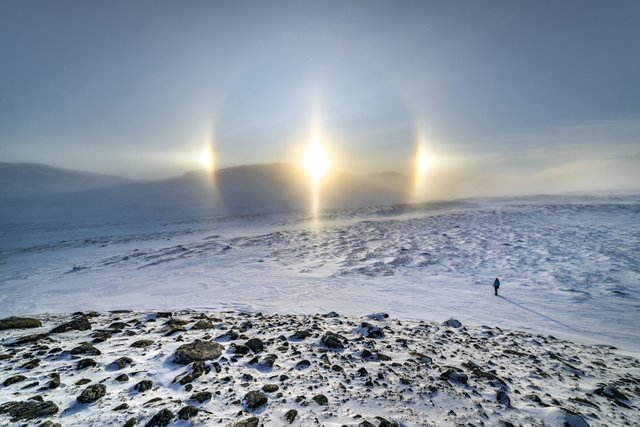
Three suns seem to hug the horizon in this otherworldly winterscape. But the evocative scene was captured during a February 3rd snowmobile exploration of the mountainous region around Abisko National Park, northern Sweden, planet Earth. The two bright spots on either side of Earth's Sun are parhelia (singular parhelion), also known as mock suns or sun dogs. The parhelia are caused by hexagonal ice crystals suspended in the hazy atmosphere that reflect and refract sunlight. Commonly seen in winter and at high latitudes, the bright parhelia lie along the visible 22 degree ice halo of the Sun.
HD image: LINK 🛸
Copyright: planet Earth 🔭
Project Website: LINK 🚀
| Name | Craft |
|---|---|
| Oleg Kononenko | ISS |
| Nikolai Chub | ISS |
| Tracy Caldwell Dyson | ISS |
| Matthew Dominick | ISS |
| Michael Barratt | ISS |
| Jeanette Epps | ISS |
| Alexander Grebenkin | ISS |
| Butch Wilmore | ISS |
| Sunita Williams | ISS |
| Li Guangsu | Tiangong |
| Li Cong | Tiangong |
| Ye Guangfu | Tiangong |
Upvoted! Thank you for supporting witness @jswit.
Downvoting a post can decrease pending rewards and make it less visible. Common reasons:
Submit
Downvoting a post can decrease pending rewards and make it less visible. Common reasons:
Submit